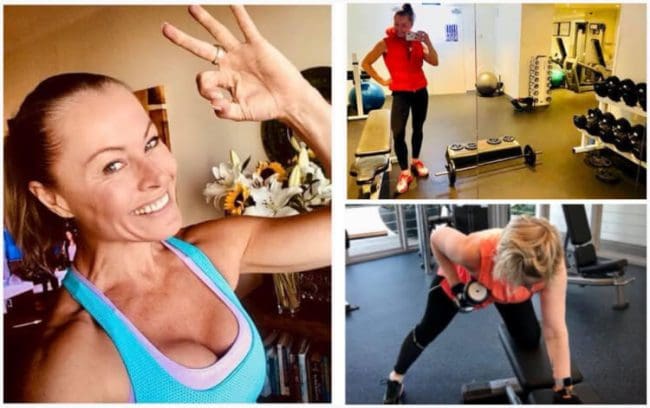With apartment prices recovering slowly in Sydney – while house prices are soaring to record levels – and with unit rents tumbling in Melbourne at twice the rate of rent drops in Sydney, it’s fair to say the Australian property market is all over the place.
Add to the mix that the current glut of apartments in Melbourne is predicted to flip to a critical shortage in three years, and the median house price in Byron Bay is now almost the same as Sydney, and it’s clear that the Australian property market is in a state of extreme, largely covid-driven flux.
The median unit price in Sydney is now 66 per cent lower than the median house price in the city – the biggest difference since Domain property figures began, writes Sue Williams – meaning many house-hunters are seriously considering apartments as a more viable option, for both purchasers and renters.
The demand for houses is clearly growing, judging by the rising prices, but that is putting more free-standing properties further out of reach of prospective purchasers, many of whom are now considering apartment life for the first time.
Developers are recognising the trend and striving to create apartments with more space and higher quality finishes that would appeal to this new market.
Stuart Penklis, head of residential at developer Mirvac says there’s now a discernible shift in owner-occupiers and families choosing apartments.
“Before, people aspired to live in a free-standing house but everything has changed in the past 12 months,” he says. “Affordability of houses has significantly diminished and high-quality, larger apartments have become a good-value proposition.
“In addition, people are increasingly looking for something that will give them a good lifestyle in connected and well-serviced communities that have a lot of amenity on the doorstep. We’ve seen this change happening across the country, and particularly on the eastern seaboard, and I think the advent of COVID accelerated the change, too.”
Apartments lagging
The most recent Domain House Report issued last month found the Sydney median house price had reached $1,211,488, up 6.7 per cent over 2020 to hit the record high. In comparison, apartment prices have been lagging, and have actually fallen $20,000 from the onset of the pandemic in March 2020, to a median of $729,840.
Domain senior research analyst Nicola Powell said the fall was largely a result of weaker investor activity as a result of COVID-19 border closures preventing migrants and overseas students from coming in to take up apartments, as well as many tenants quitting because of market uncertainty.
“The price gap between houses and units in Sydney is continuing to widen,” Dr Powell said. “Over the past three decades it is rare that house and unit prices move in opposite directions annually, but weaker investor activity has disproportionately impacted unit prices.”
Blake Schulze, a director of NSW residential project marketing with agency Colliers International says he’s seeing many more people looking to buy apartments.
“I think for some time now, people are being priced out of the housing market or they’re missing out because the lack of stock means sometimes houses are selling in less than a week,” he says. “As a result, we’re definitely experiencing an increasing number of people who are looking at existing apartments, or those for sale off the plan where they have more choice, and more time to buy.
“I think this is a trend that will only increase in popularity as time goes by. Many have been looking at houses but are now seeing apartments as a very viable option and we’re now seeing it in all parts of the market; first-home-buyers, upsizers and downsizers.”
Melbourne plunge
Meanwhile The Age reports that apartment building in Melbourne is set to plummet, with a property research company tipping the number of units completed across Victoria to plunge from more than 16,000 this year to just 800 in 2024.
With lead-in times for a large apartment complex of up to five years, Charter Keck Cramer forecasts that in three years’ time Victoria will build just 4 per cent of the number of apartments completed at the sector’s 2016 peak, when 19,400 were built.
The Urban Development Institute of Australia (UDIA) says the present glut of apartments in central Melbourne, a result of the COVID-19 crisis, looks set to flip to an acute city-wide shortage in the coming years, costing jobs and making the city’s housing supply problem worse.
Rental vacancies in central Melbourne have soared to 8.4 per cent – twice the rate of the broader metro region – with desperate landlords cutting rents below levels seen 10 years ago. Melbourne apartment rents have dropped 11 per cent over the year, exactly double the fall in Sydney rents.
Apartment prices too have tumbled, but not as dramatically as rent. In Docklands, the median unit price was down 3.6 per cent in the 12 months to March. In Southbank it was down 3.1 per cent to $543,000 and in the CBD the fall was 1.4 per cent to $457,450.
UDIA says developers are responding to the collapse in the market for central Melbourne apartments, driven by the closure of international borders to overseas students and tourists, by placing existing projects on hold and putting the brakes on new builds.
Georgia Warren-Myers, senior lecturer in property at Melbourne University, told The Age that home building in Victoria was already behind what was needed, but the absence of international students and short-stay apartment operators, plus the uncertainty surrounding their return, were the key factors in the central Melbourne apartment market.
She agreed the present glut could well turn into a shortage within years, but said the forecast completion rate seemed overly pessimistic.
“If everything bounces back to ‘normal’, yes there will likely be a period where vacancy will drop and rents will increase generating an affordability issue,” she said.
“However, I would say that once normal is back and vacancy rates drop, you will see a flurry of activity happening as this recovers and there will be subsequent increase in supply in later years – it just depends on how long it takes to get back to normal.”




